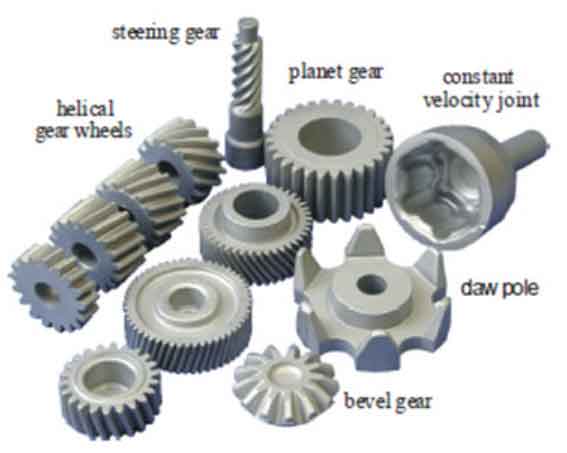Precision forging technology has undergone significant advancements in recent years, pushing the boundaries of manufacturing capabilities and revolutionizing the production of metal components. These advancements have led to improvements in accuracy, efficiency, versatility, and overall performance. This article explores some of the key advancements in precision forging technology and their impact on the manufacturing industry.

I. Computer-Aided Design and Simulation:
Computer-aided design (CAD) and simulation tools have played a pivotal role in advancing precision forging technology. Manufacturers can now create intricate component designs with high precision using CAD software, allowing for precise control over the desired shape, dimensions, and tolerances. Furthermore, simulation software enables engineers to analyze the forging process digitally, predicting material flow, stress distribution, and potential defects before the actual production. This virtual modeling and simulation capability saves time and resources by optimizing the forging process and ensuring the accuracy of the final product.
II. Process Monitoring and Control:
Advancements in sensor technology and real-time monitoring systems have enhanced the control and quality assurance of precision forging processes. Sensors embedded in the forging equipment can capture critical process parameters such as temperature, pressure, and strain, providing valuable data for process optimization and quality control. Advanced control algorithms can adjust the process parameters in real-time, ensuring consistent forging conditions and reducing the risk of defects. This level of process monitoring and control improves accuracy, repeatability, and overall productivity in precision forging.
III. Automation and Robotics:
The integration of automation and robotics has revolutionized precision forging operations. Robotic systems can handle material feeding, die changing, and part extraction, reducing manual labor and improving productivity. Automated forging cells equipped with robotic arms can perform complex forging operations with high precision and consistency, resulting in improved accuracy and reduced cycle times. The use of robotics in precision forging has also enhanced worker safety by automating hazardous or physically demanding tasks.
IV. Additive Manufacturing and Hybrid Processes:
The combination of precision forging with additive manufacturing (AM) techniques has opened up new possibilities in component production. Hybrid processes, such as forging and 3D printing, allow for the creation of complex geometries and customized designs. Additive manufacturing can be used to fabricate preforms or near-net shape components, which are then further processed through precision forging to achieve the final shape with enhanced accuracy. This integration of AM and precision forging offers greater design flexibility, reduced material waste, and improved component performance.
V. Material Science and Alloy Development:
Advancements in material science and alloy development have contributed to the evolution of precision forging technology. New alloy compositions and heat treatment processes have been developed to improve the mechanical properties and performance of forged components. For example, the introduction of advanced high-strength steels, aluminum alloys, and titanium alloys has led to components with higher strength, reduced weight, and enhanced corrosion resistance. These materials enable manufacturers to produce high-performance components with exceptional accuracy and durability.
VI. Smart Manufacturing and Data Analytics:
The implementation of smart manufacturing concepts, including the Industrial Internet of Things (IIoT) and data analytics, has transformed precision forging operations. Connected machines and sensors collect real-time data from the forging process, which can be analyzed to optimize production parameters, predict maintenance needs, and identify quality issues. Data analytics and machine learning algorithms enable manufacturers to make data-driven decisions, improve process efficiency, and enhance overall product quality.
Advancements in precision forging technology have pushed the boundaries of manufacturing, enabling the production of metal components with unprecedented accuracy, efficiency, and performance. With the integration of computer-aided design, simulation, process monitoring, automation, additive manufacturing, material science, and data analytics, precision forging has become a highly sophisticated and versatile manufacturing process. These advancements have not only improved the accuracy and quality of forged components but also increased productivity, reduced costs, and opened up new opportunities for innovation in various industries. As precision forging technology continues to evolve, we can expect further advancements that will shape the future of manufacturing.
